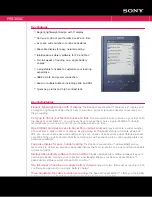
REA
VERIFIER
© REA Elektronik GmbH, 64367 Mühltal, Germany --- REA MLV-2D Manual Version 3 – 21/12/2015
Page 5 of 98
1
Introduction
The REA MLV-2D is an instrument for verifying the quality of printed matrix codes and
1D codes. It is a stationary piece of equipment that must be connected to a PC over
an Ethernet network. The PC runs the supplied analysis software and device drivers,
and is used to display the verification reports.
In contrast to barcode and matrix code scanners, the REA MLV-2D is a measuring
instrument that works on optical principles. All measuring instruments must be
adjusted and calibrated regularly (test equipment monitoring). These adjustments and
test equipment monitoring can be performed by the operator.
A verification result may point to quality defects. In practice, these quality defects
may range from barely noticeable to a total failure in terms of legibility – depending
on the application and the extent of the defects. The course of action chosen as a
response to quality defects is highly dependent on the corresponding application
conditions and the code readers used.
Scanners are typically unsuited to quality control work. Their task is to capture codes
as efficiently as possible. Any attempt to use a scanner to perform quality control
work merely provides information about the ability of the scanner used to read bad
codes.
If various types of scanner are used, the decoding results may show differences. For
quality control work involving printed codes, the focus is on the code's quality
properties and not the ability of the scanner to compensate for defects in code
representation.
ISO/IEC 15415 and ISO/IEC 15416 are applied to grade the verification results. The
grading is tabulated below:
ISO/IEC grade
ANSI grade
With multiple
measurement
Meaning
4
A
3.5 – 4.0
Very good
3
B
2.5 – 3.49
Good
2
C
1.5 – 2.49
Satisfactory
1
D
0.5 – 1.49
Acceptable
0
F
Below 0.5
Fail/error






































